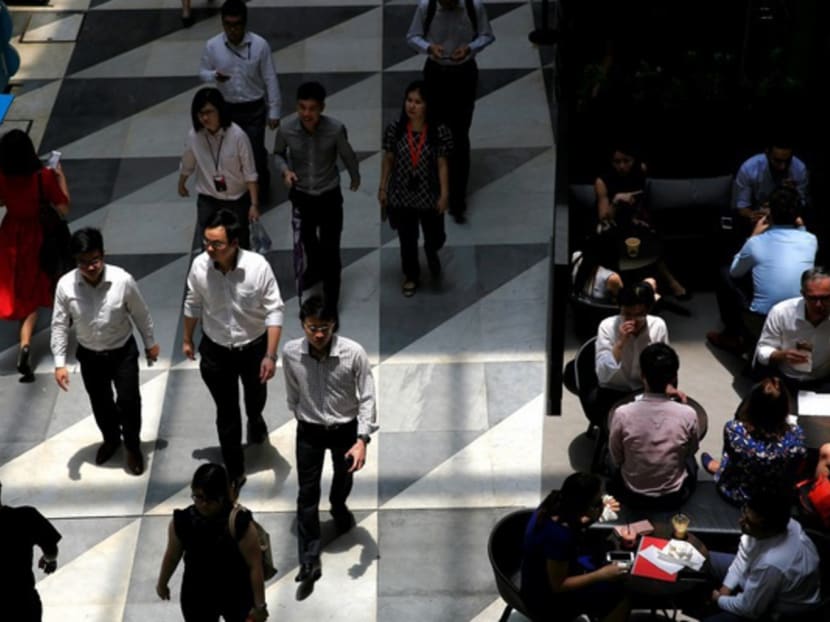Building Singapore’s creative industry
Following the World Economic Forum last year, many news headlines exclaimed the impact of the Fourth Industrial Revolution and the adverse effects that technology is having on the labour market. The topic made for both stark and sensational reading.
Following the World Economic Forum last year, many news headlines exclaimed the impact of the Fourth Industrial Revolution and the adverse effects that technology is having on the labour market. The topic made for both stark and sensational reading.
Employment has always been a benchmark of national economic performance, and regardless of whether the threat comes from robots or restructuring, there are genuine concerns about job security, unemployment and the career opportunities available to young Singapore graduates.
The change in how people work and the types of jobs in demand is something not only being experienced in Singapore, it is a phenomena occurring across the globe.
In response, many countries are looking to boost Science, Technology, Engineering and Mathematics education to stay globally competitive. This is also true for Singapore, but in doing so, it is important not to overlook the role of the creative industry here.
In Singapore, the design sector contributed S$2.13 billion to the nation’s GDP in 2013 and employed 30,000 people. The number of people working in the advertising industry is estimated to be close to 10,000, and this group has won about 65 per cent of regional advertising accounts in the Asia-Pacific region in the last three years, according to R3, a consultancy covering the marketing services sector.
Last year, in the first quantified study of the economic and social contribution of cultural and creative industries around the world by Unesco and EY, Singapore was ranked as the fifth best city for attracting global creative talent, ahead of cities like Tokyo and Berlin.
Singapore is also a Unesco “Creative City of Design” and the ninth most creative country in the world according to Martin Prosperity Institute’s Global Creativity Index.
This is not surprising. Over the past decade, Singapore has become a sweet spot for creative canvases, aided by the shift in economic power from the West to East, as well as concerted efforts by the Government to promote the creative industry.
The combination of political and economic stability, geographic location, growth of Asia’s consumer market, world-class infrastructure and ease of doing business has created more employment opportunities for people wanting to work in the fields of arts, design and media.
This has in turn generated interest among job seekers, as evident, for instance, in the increased number of participants at this year’s Institute of Advertising Singapore (IAS) Careers Fair compared to previous years.
While it is encouraging to see growing interest in the creative industry among Singapore job seekers, the value of Singapore’s creative industry will only be as good as the talents of its people.
Going forward, the question to ask is not whether Singapore is attractive as a destination for creative business, but whether our labour force has the skills to capitalise on the Republic’s position as a creative global hub.
Quite a lot has been said about how Singapore’s education system is not evolving fast enough to promote creative thinking, or how it has fostered a generation that has not endured enough hardship, thereby lacking the grit and tenacity that innovation requires.
Yet, there is also evidence to suggest the contrary. Local talents and agencies have been recognised on the world stage for producing outstanding work that delivers on both creativity and effectiveness.
BBH Asia Pacific’s Bookbook campaign for IKEA is one example. An idea conceptualised from the agency’s Singapore office became the top brand video globally, engaged audiences, won multiple awards and lifted business performance for the client.
To build up more of such achievements, Singapore’s creative firms and workers need to invest in professional development. Both individuals and employers have a role to play in staying ahead in a fast-paced industry where the terms of business no longer hinge on where you are, but how good you are.
It is no longer viable for organisations to put creative right brainers and logical left brainers in silos. For many businesses, the ideal candidate is one that has both creative and analytical thinking skills. These candidates are not easy to find, but the skills can be developed through short-term courses and training workshops.
IAS is doing its part by offering professional development programmes that expose individuals to skills as diverse as account management, digital strategy and business planning.
One initiative, the Upstarts programme, is a partnership between Singapore universities and local creative and communication agencies to provide training for undergraduates to help them prepare for employment upon graduation.
In general, creative companies here understand the importance of constant skills upgrading to keep up with competition. Going forward, with rapidly changing technologies and a trend towards lean manpower, those in the creative industry will have to be nimble to stay ahead.
Singapore is already being recognised as a leading creative nation. What we need now is to lift the skills of people in the industry so they can make Singapore’s creative economy a significant and sustainable contributor to our nation’s prosperity.
ABOUT THE AUTHOR:
Goh Shu Fen is co-founder of R3 Worldwide and President of Institute of Advertising Singapore.










